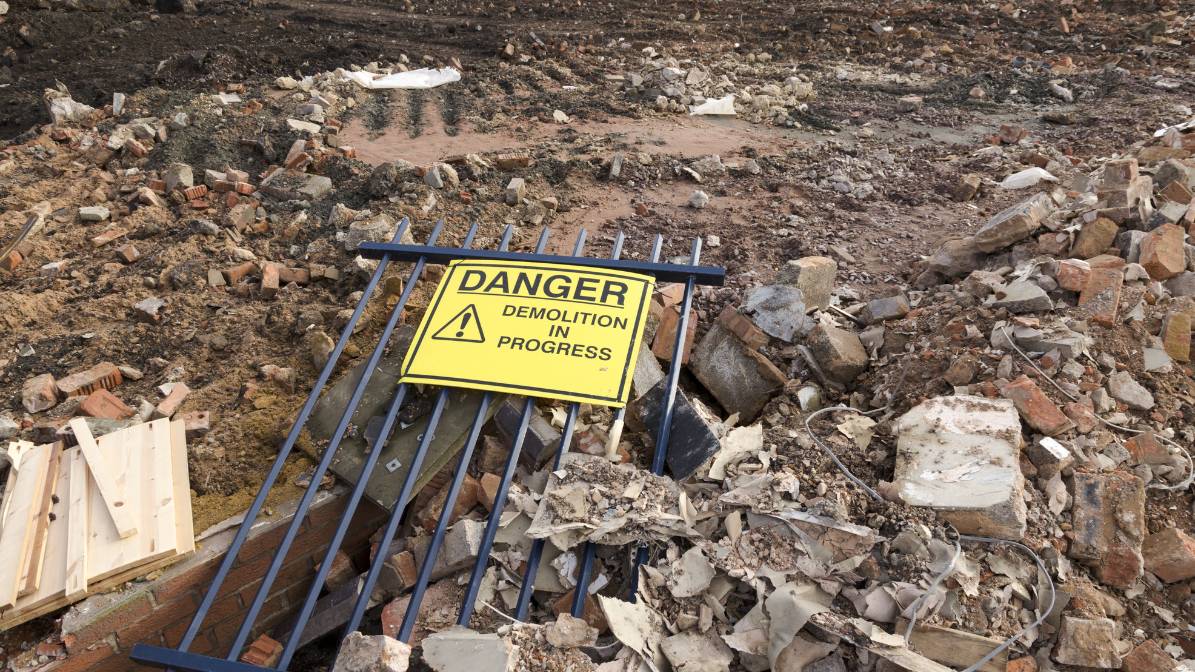Concrete demolition and removal can seem like an overwhelming task, especially for homeowners who may not have experience in dealing with such projects. However, whether you’re looking to remove an old patio, a cracked driveway, or a basement floor, understanding the process and knowing what steps to take can make the task much more manageable.
This comprehensive guide will walk you through everything you need to know about concrete demolition and removal, from planning and preparation to execution and disposal.
Why Would You Need Concrete Demolition and Removal?
There are several practical reasons why you might need to undertake concrete demolition and removal. One of the most common reasons is the deterioration of the concrete surface over time, which can lead to unsightly cracks, uneven surfaces, and potential safety hazards.
Additionally, you may need to remove concrete to accommodate new landscaping designs, expansions, or other structural modifications. Sometimes, concrete structures may be in the way of necessary repairs to plumbing or electrical systems buried underneath.
Regardless of the specific reason, taking a proactive approach to concrete demolition and removal can improve both the functionality and aesthetic appeal of your property, ultimately increasing its value.
Planning and Preparation
Before diving into a concrete demolition project, thorough planning and preparation are imperative to ensure safety and efficiency. Here are some essential steps to set yourself up for success:
- Assess the Area: Begin by evaluating the concrete that needs removal. Determine the size and thickness of the concrete, as well as any obstacles or structures that are nearby.
- Obtain Necessary Permits: Check with local authorities to see if you need any permits for the demolition and disposal of concrete, especially if you’re working on a large or complicated project.
- Gather Equipment: Depending on the size of the job, you may need specific tools such as sledgehammers, jackhammers, pry bars, or heavy machinery like skid steers and excavators.
- Plan for Waste Disposal: Consider how you will dispose of the concrete debris. Options include renting a dumpster, hiring a removal service, or taking the debris to a local recycling facility.
- Safety First: Ensure you have personal protective equipment (PPE) including safety glasses, gloves, hearing protection, and steel-toed boots. It’s also wise to have a first-aid kit on hand.
By following these preparations, you’ll be better equipped to handle the complexities of concrete demolition and removal, paving the way for a smoother and more successful project.
Step-by-Step Guide to Concrete Demolition
Executing a concrete demolition project requires a methodical approach to ensure efficiency and safety. Once you’re prepared, you can move on to the actual demolition process. Here’s a step-by-step approach to ensure a smooth operation:
- Mark the Area: Use chalk or spray paint to mark the boundaries of the concrete you need to remove. This helps you stay focused and avoid damaging any surrounding areas.
- Break the Concrete: Start breaking the concrete with a sledgehammer or jackhammer. Begin at the edges and work your way toward the center. For larger areas, consider renting a hydraulic breaker or hiring professionals.
- Remove Broken Pieces: As you break the concrete, use pry bars to lift and remove larger chunks. Dispose of these pieces in your designated dumpster or hauling container.
- Clean the Area: Once all the concrete is removed, clean the area thoroughly. Remove any remaining debris and level the ground if necessary.
- Inspect and Repair: Before moving on to any new installations, inspect the area for any damages that may need repair. This is especially important for surfaces that will receive new concrete or other materials.
Disposal and Recycling Options
Concrete debris is not something you can simply throw in your regular trash. Here are some responsible disposal and recycling options:
- Rent a Dumpster: For large volumes of concrete, renting a dumpster is a practical solution. Ensure that the dumpster rental company accepts concrete and other construction debris.
- Hauling Services: There are specialized hauling services that handle concrete debris. These companies will pick up and dispose of the concrete for you, saving you time and effort.
- Recycling Centers: Many recycling centers accept concrete and will crush it for reuse in various construction projects. This is an eco-friendly option that reduces landfill waste.
- Repurpose Concrete: If the concrete is in good condition, consider repurposing it for other projects around your home. Broken concrete pieces can be used for landscaping, garden paths, or even as a base for new installations.
Always check local regulations to ensure compliance with disposal requirements, and explore all available options to make your project as sustainable as possible.
When to Hire Professionals
While DIY concrete demolition can be cost-effective, some projects are best left to professionals. Here are some scenarios where hiring experts is advisable:
- Large Areas: If you need to remove a significant amount of concrete, professional services can complete the job quickly and efficiently.
- Heavy Equipment: For projects requiring heavy machinery like hydraulic breakers, professional expertise ensures safe and effective operation.
- Complex Projects: If the concrete is reinforced with rebar or located near structures that could be damaged, professionals have the skills to handle the complexities.
- Permits and Regulations: Professionals are often familiar with local regulations and can obtain necessary permits more easily.
When it comes to professional concrete demolition and removal, Parma Concrete Solutions stands out as a top choice. Their team of highly skilled experts is equipped with the latest tools and machinery to tackle projects of any scale, ensuring that the job is completed efficiently and safely. With years of experience in the industry, Parma Concrete Solutions is adept at handling complex projects, including those involving reinforced concrete, intricate landscaping designs, and challenging site conditions.
Final Thoughts
Concrete demolition and removal can be a daunting task for homeowners, but with the right planning, tools, and approach, it’s entirely manageable. Whether you choose to tackle the project yourself or hire professionals, understanding the process is key to a successful outcome.
Remember to prioritize safety, plan for efficient debris disposal, and explore eco-friendly recycling options. By following this essential guide, you’ll be well on your way to completing your concrete demolition and removal project with confidence.
For more expert tips and advice on home improvement projects, be sure to follow our blog and stay updated. Happy renovating!





